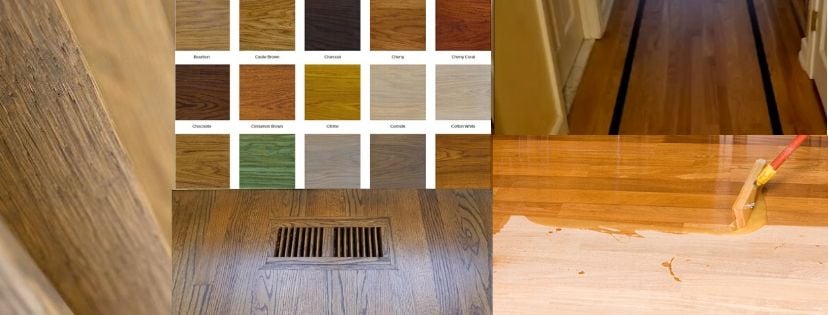Revive and Shine: The Ultimate Guide to Hardwood Floor Refinishing and Cleaning
Hardwood floors bring warmth and elegance to any home, showcasing natural beauty and timeless style. However, over Hardwood Floor Refinishing & Cleaning , even the most resilient hardwood surfaces can lose their luster, becoming dull and scratched. Reviving the shine of your hardwood floors not only enhances the aesthetic appeal of your space but also extends the life of the flooring, making it a worthwhile investment.
In this ultimate guide to hardwood floor refinishing and cleaning, we will explore everything you need to know to restore your floors to their former glory. From understanding the refinishing process to selecting the right cleaning techniques and products, we will provide you with practical tips and expert insights to help you achieve stunning results. Whether you are looking to restore a stained finish or maintain your floors' natural sheen, this guide will empower you to make informed decisions for your hardwood flooring care.

Understanding Hardwood Floor Refinishing
Hardwood floor refinishing is a process that brings back the beauty and durability of your hardwood floors. Over time, floors can become dull, scratched, or discolored due to foot traffic, furniture, and various cleaning products. Refinishing not only improves the appearance of the wood but also extends its lifespan, making it a worthwhile investment for homeowners. This process typically involves sanding down the top layer of the wood to remove imperfections and applying a new finish to restore shine.
The refinishing process begins with assessing the condition of the floors. If the wood has deep scratches, water damage, or significant wear, it may require a complete sanding. For floors that are relatively in good condition, a lighter abrasive may be used to refresh the finish without removing too much wood. The key is to choose the right method based on the specific needs of your floor. Proper evaluation ensures that the outcome will be both aesthetically pleasing and practical for daily use.
After sanding, selecting the right stain and finish is crucial. Water-based finishes are popular for their low odor and quick drying times, while oil-based finishes offer a rich color and durability. Homeowners should consider their lifestyle, preferred aesthetic, and level of maintenance when making this choice. Ultimately, refinishing hardwood floors can transform your living space, adding warmth and character while preserving the natural beauty of wood.
Essential Cleaning Techniques
Maintaining the beauty of hardwood floors begins with effective cleaning techniques. Regular sweeping or vacuuming is crucial to remove dirt and debris that can scratch the surface. A soft-bristled broom or a vacuum equipped with a hardwood floor attachment will help prevent damage while ensuring that all particles are lifted away. Establishing a routine cleaning schedule will prolong the life of your floor and keep it looking pristine.
When it comes to mopping, it's important to choose the right method. Use a damp mop rather than a soaking wet one to avoid excess moisture, which can cause warping or damage over time. Mild pH-balanced cleaners designed specifically for hardwood floors are ideal. Mix the cleaner with water according to the manufacturer's instructions for the best results. Always follow up with a dry mop or towel to ensure no water is left standing on the surface.
For deeper cleaning, consider using a hardwood floor cleaner machine. These machines can effectively remove deep-set stains and grime. Follow the manufacturer's guidelines for usage to achieve optimal results without risking harm to your flooring. Additionally, spot cleaning any spills promptly with a soft cloth will help maintain your floor's finish and prevent stains. By integrating these essential cleaning techniques, you will keep your hardwood floors beautiful and extend their lifespan.
Tips for Long-Lasting Care
To maintain the beauty and longevity of your hardwood floors, regular cleaning is essential. Use a gentle cleaner specifically designed for wood surfaces, and avoid harsh chemicals that can dull the finish. A soft microfiber mop is ideal for picking up dust and dirt without scratching the floor. For spills, clean them immediately to prevent moisture damage, wiping them with a damp cloth, and then drying the area thoroughly.
Another crucial aspect of hardwood floor care is protecting it from scratches and dents. Using furniture pads under the legs of chairs and tables can help prevent marks when items are moved. Additionally, consider placing rugs in high-traffic areas or near entrances to trap dirt and moisture before they reach your floors. Regularly inspect and maintain these protective layers to ensure they remain effective.
Finally, controlling the humidity level in your home can make a significant difference in the health of your hardwood floors. Wood tends to expand and contract with changes in moisture, leading to gaps or warping over time. Aim to keep indoor humidity levels between 30 to 50 percent, using humidifiers in dry seasons or dehumidifiers in humid months. Keeping your floors well-maintained will ensure they continue to shine for years to come.